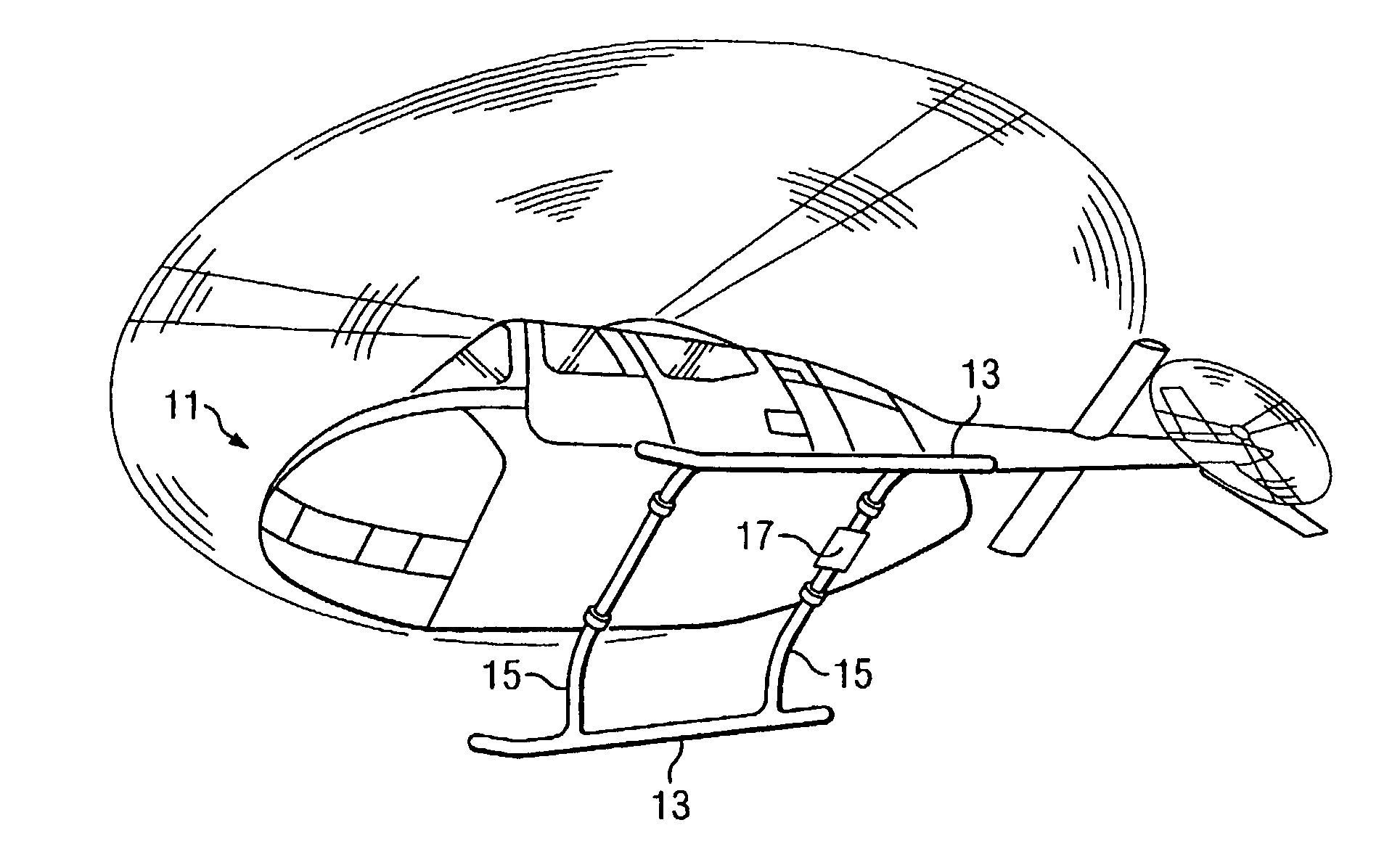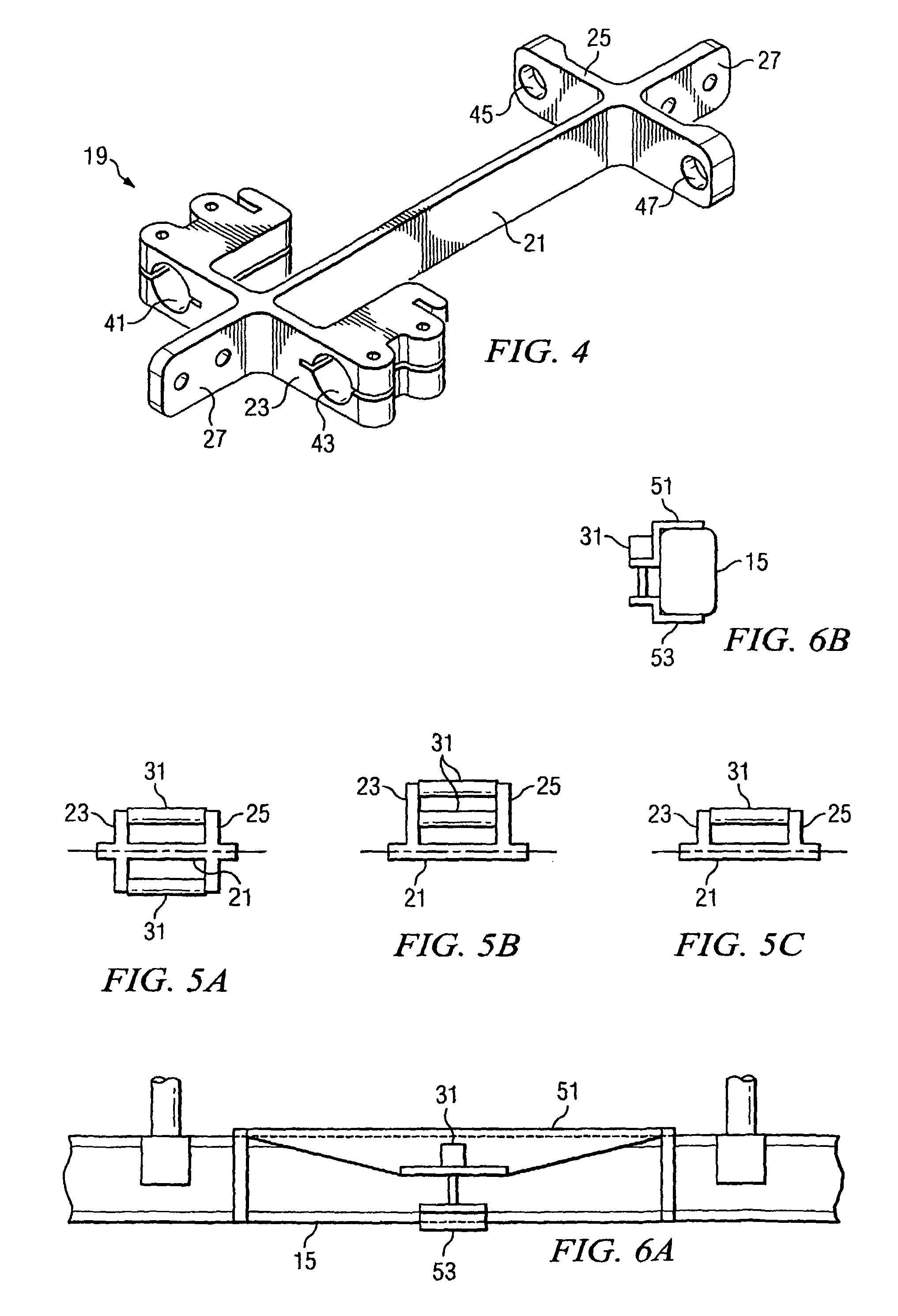Weight-on-gear sensor
a technology of aircraft and sensors, applied in the field of aircraft weight-on-gear sensors, can solve the problems of easy damage of sensors, unreliable systems dependent on physical relationship, complex systems developed to determine, etc., and achieve the effect of accurate and reliable determination of the weight-on-gear status of aircraft and affordable operation
- Summary
- Abstract
- Description
- Claims
- Application Information
AI Technical Summary
Benefits of technology
Problems solved by technology
Method used
Image
Examples
Embodiment Construction
[0024]The present invention represents the discovery that linear motion sensors may be used to accurately determine the weight-on-gear status of an aircraft in a wide range of operational conditions. A weight-on-gear sensor according to the present invention is particularly useful in applications where an aircraft has opposite landing skids connected by a cross tube.
[0025]Referring to FIG. 1 in the drawings, the preferred embodiment of an aircraft 11 with landing skids 13 connected by a cross tube 15 having a weight-on-gear sensor 17 according to the present invention is illustrated. Weight-on-gear sensor 17 provides data to the flight control computer (not shown), or FCC, onboard aircraft 11. The data provided allows the flight control computer to accurately determine the weight-on-gear status of aircraft 11. For example, if the weight-on-gear status is indicated as positive, aircraft 11 is being supported by landing skids 13. Otherwise, if the weight-on-gear status is negative, ai...
PUM
 Login to View More
Login to View More Abstract
Description
Claims
Application Information
 Login to View More
Login to View More - R&D
- Intellectual Property
- Life Sciences
- Materials
- Tech Scout
- Unparalleled Data Quality
- Higher Quality Content
- 60% Fewer Hallucinations
Browse by: Latest US Patents, China's latest patents, Technical Efficacy Thesaurus, Application Domain, Technology Topic, Popular Technical Reports.
© 2025 PatSnap. All rights reserved.Legal|Privacy policy|Modern Slavery Act Transparency Statement|Sitemap|About US| Contact US: help@patsnap.com



